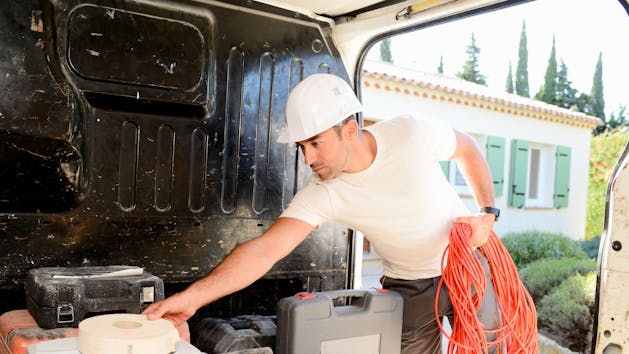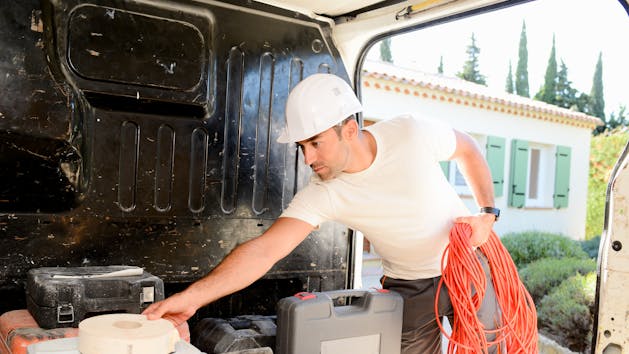Find the right solution for your business with our free Fleet Management Buyer’s Guide.
The unique landscape of oil & gas fleet management
As we head into the new year, it’s critical for all small- and mid-sized businesses to be vigilant and keep their fleets productive, efficient and safe. However, due to their characteristic high operational costs, oil and gas fleets have unique needs for monitoring and optimizing utilization of their vehicles and equipment. Making this task all the more challenging is the mix of various equipment types and manufacturers, as well as numerous and often large job sites.
Here are some examples of the data points that are most important to fleets in this space:
- Vehicle usage (total driving hours/engine on time)
- Equipment and trailer usage (location and engine hours)
- Worker time at each well site
- Time between jobs (driving time)
Let’s look at some of the specific ways that telematics is uniquely equipped to help oil and gas fleets access these key data points and make them actionable to enhance their businesses in 2019.
Field performance at your fingertips
Monitor individual workers and assess performance, improving accountability. Some of the individual metrics made accessible by telematics include:
- Time spent on the job: Vehicle location tracking records how long a worker was at a job site – and electronic inspection forms can prove onsite completion, with added geo-tagging ensuring that sufficient time was spent on mechanical inspection.
- Monitoring activity: Telematics tracks the location of all employees, whether their vehicle is active and how long that vehicle has been at a job site, keeping your managers up to date on the status of each and every job.
- Contractor tracking: Businesses in the oil and gas space often address gaps in their fleets with contractors, such as water haulers. Plug-and-play tracking devices allow you to monitor these temporary employees, helping to ensure they complete jobs and comply with environmental regulations.
Minimize downtime of critical assets
Proactive maintenance and vehicle health monitoring can help extend the life of specialized equipment and vehicles, improving ROI over time. Telematics enables you to follow recommended service schedules easily with automated and precise tracking of engine hours and mileage. This helps ensure that recommended maintenance schedules are kept, preserving your warranty and overall vehicle health. Alerts can also be set up to trigger when potential maintenance issues are detected, allowing you to address them before they become more serious (and more costly).
Stay compliant now and into the future
Oil and gas fleets face a range of unique compliance requirements, but telematics can help these businesses tackle ongoing compliance challenges by streamlining and automating their processes. From the DOT’s Hours of Service requirements (including the ELD mandate) and Driver Vehicle Inspection Reports (DVIRs), a comprehensive GPS tracking solution can ensure that you stay in compliance and help address any new regulations that may come down the road.
Create a culture of safe driving
Reports allow you to customize coaching for more effective training, and automated alerts can inform drivers and managers of these dangerous behaviors as they happen. By making safety a part of every employee’s job, you help to create a safer driving environment for both your workers and everyone else on the road.
GPS tracking helps you to take an active role in prioritizing safety by tracking:
- Speeding
- Hard braking
- Rapid acceleration
Additionally, it’s important to define safety within the landscape of new and evolving transportation modes: do this by setting parameters and coaching drivers proactively with in-cab alerts. You can also monitor driving hours (including those mandated HOS logs) to keep your drivers compliant and within safe limits. Using smart scheduling tools can help you balance driving shifts and help prevent accidents from tired or overworked employees.
Fuel tax claims? No problem
Oil and gas fleets do a lot of their work on private roads, making them eligible to receive off-road fuel tax rebates. However, manually collecting the information needed to claim these rebates can be time-consuming and burdensome. Telematics offers the ability to automate this process, generating reports that distinguish between private and public roads traveled in addition to logging the number of miles driven.
No more wasted fuel
Fuel is at the heart of your business, and the impact of wasted fuel on your bottom line can be significant – meaning any fluctuation in gas prices can make a big impact on operational costs. Telematics reporting can be used to identify opportunities for fuel utilization improvement by easily showcasing cost-based metrics (wasted fuel, fuel purchased, etc.) and their impact on your bottom line; without having to pull spreadsheets or self-calculate.
Companies can also increase their fuel efficiency by using near real-time GPS tracking software to get a better sense of where vehicles are going, the routes they’re taking and where efficiencies can be gained to eliminate fuel waste, ultimately allowing them to determine precisely how much gasoline or diesel is being consumed by their fleet each year.
Adapt easily to changing demands
Oil and gas fleets must grow and scale back to meet the needs of the current market and match their production schedules accordingly. Visibility into their vehicles and equipment, including how they’re being used and their current health status, equip fleets with the necessary knowledge to remain up and running and stay agile. Fleet managers also gain the ability to identify cost-cutting opportunities during leaner times, based on utilization and other factors, as well as areas where the fleet should be scaled up to meet demand.
Seamless third-party integration
Telematics gives fleets the ability to coordinate with contractors and other agencies to complete tasks and projects with greater efficiency and ease, especially when the collaboration means a mixed fleet of equipment and vehicle types and various manufacturers, often including both over-the-road and light-duty trucks. By improving coordination with third-party contractors, managers can quickly and easily improve utilization while also minimizing disruption.
Download our new ebook to discover more about our top-ranked solutions and the many ways your oil and gas fleet can reap significant benefits from using telematics.
Find out how our platform gives you the visibility you need to get more done.




